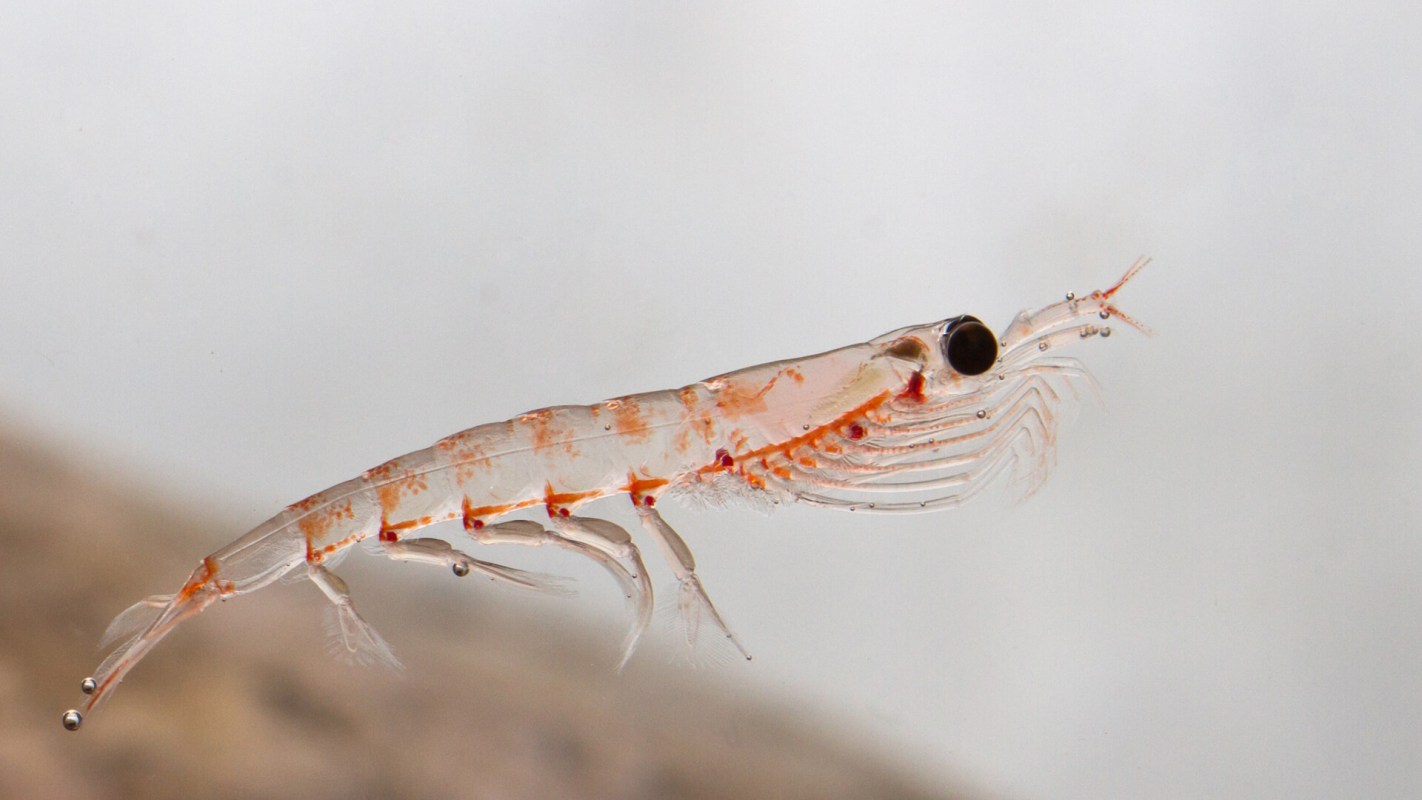Krill's color-changing technique may be the secret to keeping buildings cool and saving energy during warm weather.
Krill are small crustaceans near the bottom of the aquatic food chain that are frequently eaten by whales, seabirds, and other fish. Though tiny, these crustaceans are sophisticated creatures with a natural process that could be integral to improving buildings' energy efficiency.
Researchers from the University of Toronto published a paper in Nature Communications that proposes adapting krill's color-changing phenomena into a synthetic product that would protect building exteriors from heat. If successful, this technique could decrease our reliance on heating and cooling systems that use harmful energy sources.
Antarctic krill have pigments in their skin that shield them from the sun. When exposed to too much sunlight, krill change color from white to orange using bundles of pigment stored throughout their skin. These pigments act as curtains to protect krill from UV rays.
Researchers want to apply this shading technique to skyscrapers by filling windows with two kinds of liquid, one that will absorb sun rays and another that enables light to shine through. Dispersing pigmented liquid through windows could block sunlight and keep buildings cool.
Scientists believe that by altering the flow of these liquids, they can adjust the shape of the shade and decrease glare. They predict this krill cooling technique can decrease energy consumption by more than 30%.
This isn't the first time researchers have relied on nature for scientific inspiration. Scientists often use biomimicry — a practice that mimics and learns from nature's processes — to solve human problems. Architects, engineers, and other changemakers borrow techniques from animals, plants, ecosystems, and other natural phenomena for sustainable solutions.
Around 40% of greenhouse gas pollution in the U.S. is from the heating, cooling, and lighting infrastructure of buildings. This krill-inspired solution can improve energy efficiency in skyscrapers and replace cooling systems that use dirty energy sources.
Researchers are creating a prototype to test this technique in real-world conditions. This system could also be more efficient and cheaper than current sustainable cooling methods in green buildings.
Raphael Kay, the lead author for the article and Harvard research fellow, expressed hopes that this simple solution will be a success. He told Bloomberg, "We're just talking about moving around water, which is basically as easy as it gets."
Join our free newsletter for weekly updates on the coolest innovations improving our lives and saving our planet.









